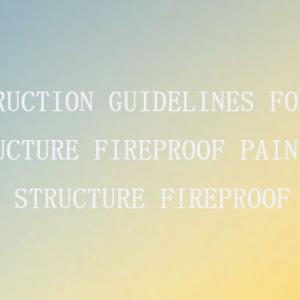Steel structure bolts
Steel structure bolts play a key role in many fields. In marine engineering, they are used to connect facilities such as offshore platforms to resist seawater corrosion and wind and wave impact. In the construction of municipal facilities, such as overpasses and urban landscape buildings, they ensure that the structure is stable and safe. In the machinery manufacturing industry, the steel structure frames of large machinery and equipment also rely on bolt connections. In addition, in the renovation and reinforcement of old buildings, steel structure bolts can enhance the stability of the original structure. Its wide range of application scenarios reflects the important position of steel structure bolts in modern engineering construction. In Steel structure workshops, bolts ensure that the components are firmly connected, which is convenient for rapid assembly and later transformation. Steel structure corridors are reliably connected with the help of bolts to adapt to different terrains and pipeline layouts. Steel structure platforms are installed with bolts, which are flexible and can bear the weight of equipment. In the installation of steel structure villas, bolts ensure the stability and beauty of the building. In terms of steel structure installation and steel structure reinforcement, bolts can effectively reinforce old steel structures, improve structural safety, and are widely used in the construction and maintenance of various scenarios. 1. Types of bolts1. High-strength bolts
High-strength bolts are a type of bolt commonly used in steel structures, with the advantages of high strength and reliable connection. According to their stress performance, they can be divided into friction type high-strength bolts and pressure type high-strength bolts. Friction type high-strength bolts mainly rely on friction to transfer loads, while pressure type high-strength bolts rely on the pressure between the bolt rod and the hole wall to transfer loads after the friction is overcome.
2. Ordinary bolts
Ordinary bolts have relatively low strength and are generally used for secondary structures or temporary connections. Ordinary bolts can be divided into rough bolts and refined bolts. The processing accuracy of rough bolts is low, and the processing accuracy of refined bolts is high.
2. Specifications
The specifications of steel structure bolts are usually expressed in diameter and length. For example, M20×80 means that the diameter of the bolt is 20 mm and the length is 80 mm. The diameter and length of the bolt should be determined according to factors such as the stress of the steel structure and the size of the connection part.
When selecting bolt specifications, factors such as bolt spacing and margins also need to be considered. The spacing and margins of the bolts should meet the requirements of relevant standards to ensure the reliability and safety of the connection.
III. Grade
1. Grade of high-strength bolts
The grade of high-strength bolts is usually expressed by strength level, such as 8.8, 10.9, etc. Among them, the tensile strength of 8.8-grade high-strength bolts is 800MPa, and the yield strength is 640MPa; the tensile strength of 10.9-grade high-strength bolts is 1000MPa, and the yield strength is 900MPa.
The higher the grade of high-strength bolts, the stronger their strength and bearing capacity. However, when selecting the grade of high-strength bolts, it should be determined based on factors such as the stress conditions of the steel structure and the importance of the connection parts. The higher the grade, the better.
2. Grade of ordinary bolts
The grade of ordinary bolts is usually expressed by 4.6, 4.8, etc. Among them, the tensile strength of 4.6-grade ordinary bolts is 400MPa, and the yield strength is 240MPa; the tensile strength of 4.8-grade ordinary bolts is 400MPa, and the yield strength is 320MPa.
The grade of ordinary bolts is relatively low and is suitable for secondary structures or temporary connections. When choosing the grade of ordinary bolts, a reasonable choice should be made according to actual needs.
IV. Standards
The standards for steel structure bolts are mainly national standards and industry standards. National standards such as "Technical Conditions for High-Strength Large Hexagon Head Bolts, Large Hexagon Nuts, and Washers for Steel Structures" (GB/T 1231), "Torsion Shear High-Strength Bolt Connection Pairs for Steel Structures" (GB/T 3632), etc.; industry standards such as "Technical Code for Welding of Building Steel Structures" (JGJ 81), etc.
These standards have made clear provisions on the material, performance, size, processing accuracy, inspection methods, etc. of steel structure bolts. When selecting and using steel structure bolts, relevant standards should be strictly followed to ensure the quality of the bolts and the reliability of the connection.
The types, specifications, grades and standards of steel structure bolts are of great significance for the correct selection and use of bolts to ensure the installation quality and safety and stability of steel structures. During the installation of steel structures, appropriate bolts should be selected according to actual conditions, and construction and inspection should be carried out in strict accordance with relevant standards to ensure that the connection of steel structures is firm and reliable. If you have any other questions or needs about steel structure bolts, please feel free to contact us and we will serve you wholeheartedly.





